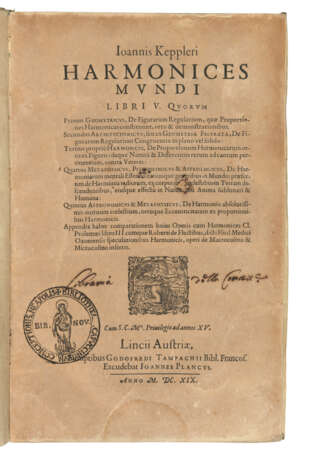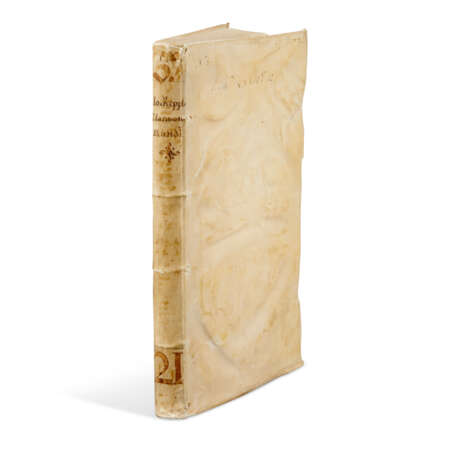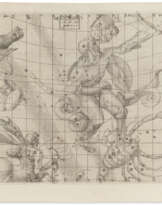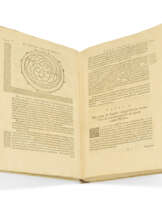ID 794417
Lot 167 | KEPLER, Johannes (1571-1630)
Valeur estimée
£ 80 000 – 120 000
Harmonices mundi libri V. Linz: Johann Planck for Gottfried Tampach, 1619.
First edition of Kepler’s major cosmological treatise, an exposition of his theory of the harmony of the universe, and the work which describes the third law of planetary motion. Kepler had drafted a plan for the work already in 1599, but he was unable to return to it until 1616. The next two years saw the death of two of his children, and work on his Harmonice became a solace. All of his previous work and the insights into the working of the cosmos that he had gained in the intervening decades served as material for this, his life's work. ‘Certainly for Kepler this book was his mind's favorite child. Those were the thoughts to which he clung during the trials of his life and which brought light to the darkness that surrounded him... his Harmonice appears as a great cosmic vision, woven out of science, poetry, philosophy, theology, mysticism…' (Caspar, Kepler, 1959, p. 290, quoted in DSB). Kepler attempted to discern God's archetypal laws of the universe in four areas: geometry, music, astrology and astronomy. He conceived of a universal harmony as the embodiment of certain simple geometrical proportions relating these different aspects of the cosmos. In book I he studied the properties of polygons and polyhedrons, and introduced the great and small stellated dodecahedrons (rediscovered in 1810 by Louis Poinsot). In Book V, ‘on the harmony of celestial motion,’ Kepler refined the theory expounded in his Mysterium cosmographicum (1596), that the mean distances of the planets from the sun are in proportions related to spheres inscribing and circumscribing the five regular solids. ‘Now, imbued with a new respect for data, he could no longer dismiss [the earlier theory's] 5 percent error... In the astronomical book V... he came to grips with this central problem: By what secondary principles did God adjust the original archetypal model based on the regular solids?... In the course of this investigation, Kepler hit upon the relation now called his third or harmonic law’ (DSB). In this he related the magnitude of the planetary orbits to their periods of revolution around the sun, and established that the square of a planet's periodic time is proportional to the cube of its mean distance from the sun. Caspar 58; Dibner Heralds 6; Horblit 58; Houzeau and Lancaster 11832; Zinner 4737; Norman 1207. See PMM 112.
Folio (290 x 188mm). General title, (first state with printer's woodcut device and without the text beginning ‘Accessit nunc…,’) 5 section titles, with the dedication to King James of England (*2r-*4r), later suppressed by Kepler and absent from a few copies, errata leaf at end, 5 engraved plates, numerous woodcut diagrams and illustrations in text after W. Schickard, woodcut musical notation in Book III (occasional browning or foxing, small ink-burn to title, affecting a few lines, a few words in the dedication deleted in ink). Italian limp vellum circa 1700, spine ink-lettered. Provenance: Naples, Capuchin Order (early ink stamp and inscription on title) – ‘L. C. B. D’ (small 19th-century blindstamp on title) – Frank S. Streeter (sale Christie’s NY, 16-17 April 2007, lot 295; book-plate).
Special notice
No VAT on hammer price or buyer's premium.
| Artiste: | Johannes Kepler (1571 - 1630) |
|---|---|
| Catégorie maison de vente aux enchères: | Livres imprimés |
| Artiste: | Johannes Kepler (1571 - 1630) |
|---|---|
| Catégorie maison de vente aux enchères: | Livres imprimés |
| Adresse de l'enchère |
CHRISTIE'S 8 King Street, St. James's SW1Y 6QT London Royaume-Uni | |
|---|---|---|
| Aperçu |
| |
| Téléphone | +44 (0)20 7839 9060 | |
| Commission | see on Website | |
| Conditions d'utilisation | Conditions d'utilisation |














